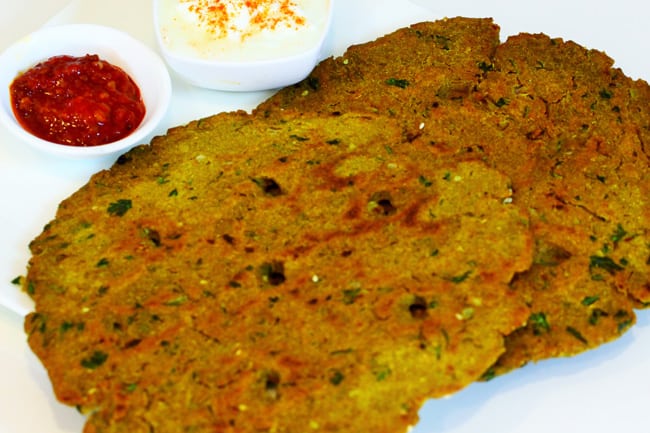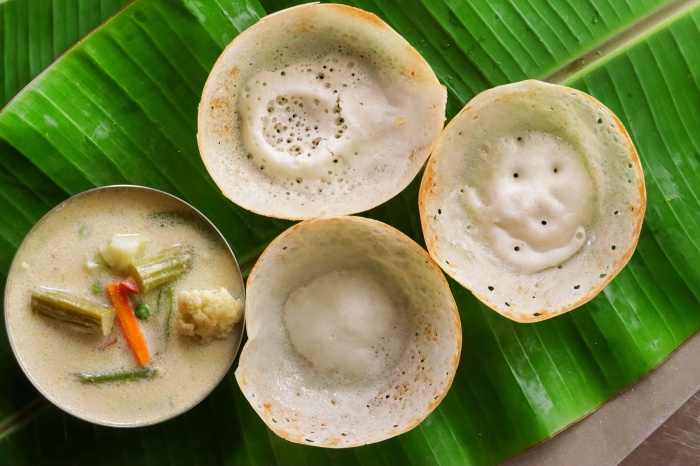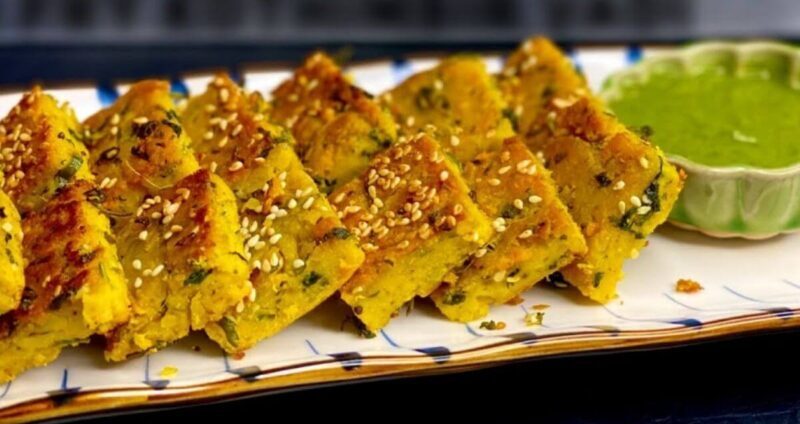Introduction:
Kurkure Dosa Recipe: Dosa, a renowned South Indian delicacy, is a versatile dish made from a combination of rice and urad dal. Served with coconut chutney and vegetable sambar, dosas come in various forms like masala dosa, set dosa, ragi dosa, wheat flour dosa, pepper dosa, and more. This recipe provides insights into making plain dosas and paper dosas, emphasizing techniques to prevent sticking.
Ingredients:
- 3/4 cup Idli/Dosa Rice (Parboiled Rice)
- 3/4 cup regular rice
- 1/2 cup Urad Dhuli Dal
- 1/4 teaspoon Fenugreek seeds
- 1/2 tablespoon Chana Dal (optional)
- Water, as needed
- Salt to taste
- Oil

Dosa Batter Preparation:
Step 1:
- Gather all the necessary ingredients. Rice, urad dal, and fenugreek seeds are the primary components, with optional inclusion of chana dal for a golden dosa color.
Step 2:
- Wash both types of rice thoroughly, draining excess starch. Soak them in 2 cups of water for 4-5 hours.
Step 3:
- Wash urad dal and chana dal together and soak them in 1 cup of water for 4-5 hours, along with fenugreek seeds.
Step 4:
- Drain excess water from the soaked urad dal into a small bowl (reserving it for grinding). Place the washed urad dal, chana dal, and fenugreek seeds in a large mixer jar.
Step 5:
- Add water as needed and finely grind the mixture. Use the soaked water, and if required, add plain water. The quantity of water depends on the urad dal quality; adjust accordingly.
Step 6: Prepare Urad Dal
- Ensure the powdered urad dal has a medium consistency – not too thin or thick. Transfer it to a large container.
Step 7: Soak and Grind Rice
- Wash soaked rice thoroughly and transfer to the mixer jar.
- Grind rice finely in one or two turns, adding 1-2 tablespoons of water at a time.
- The rice batter may have a light grainy texture compared to the smooth urad dal batter. Transfer it to the container.
Step 8: Mix and Ferment
- Add salt to the combined batter and mix well.
- Cover and let it ferment at room temperature for 8-10 hours or overnight. In cold weather, ferment in a warm place or inside an oven with the lights on.
Step 9: Adjust Consistency
- After fermentation, stir the batter; if it appears thick, add a few tablespoons of water. Dosa batter should be thinner than idli batter.
Step 10: Heat Tava and Spread Batter
- Heat a non-stick or iron tava on medium flame.
- Sprinkle water; if it evaporates quickly, the tava is hot.
- Pour 1/2 teaspoon oil on the pan and spread evenly with a wet cloth.
- Take batter in a ladle and spread it thinly in a round shape, rotating it.
Step 11: Add Oil and Cook
- Sprinkle 1 teaspoon oil around the edges of the dosa.
- When the bottom turns light golden brown and edges rise (about 2 minutes), it’s ready.
Step 12: Flip and Serve
- Flip the dosa and cook for a minute. For thin dosas, no need to cook the other side.
- Transfer to a plate. Clean the tava with a wet cloth before making the next dosa.
Tips and Variations:
- Rice requires less water for grinding than urad dal.
- Fermentation time varies with weather; summer takes 6-8 hours, winter may take 12-14 hours.
- Avoid overheating during grinding for proper fermentation.
- To prevent sticking, oil the pan before the first dosa.
- Ensure the tava is well-heated before spreading the batter; test with water drops.
- Clean the tava with a wet cloth before each dosa to prevent sticking.
- Refrigerated dosa batter lasts 3-4 days; bring it to room temperature before use.
Kurkure Dosa Recipe Method:

Preheat Dosa Tawa for the Perfect Crispiness
- Begin by heating a non-stick or cast-iron dosa tawa until it sizzles when water is sprinkled on it. This ensures an ideal cooking surface.
Prepare the Pan for Optimal Cooking
- Wipe the pan with a cloth or onion slice, creating a thin oil film. This simple step prevents sticking and enhances the dosa’s texture.
Spread Dosa Batter: The Foundation of a Great Dosa
- Pour a ladleful of dosa batter in the center, spreading it in a circular motion for a thin layer. The key to a perfect dosa lies in achieving an even and thin spread.
Cook and Add Oil: Bringing Out the Golden Crispiness
- Drizzle oil around the edges and cook until the dosa turns golden and crisp. Adding oil contributes to the dosa’s crispy texture and enhances its overall flavor.
Serve Hot: The Finishing Touch
- Fold or roll the dosa and serve hot with coconut chutney and sambar. The piping hot dosa, with its crispy exterior, perfectly complements the savory accompaniments.
Expert Tips to Ensure Your Dosas Never Stick
Well-Seasoned Tawa: The Foundation of Non-Stick Cooking
- Ensure the dosa tawa is well-seasoned. A well-seasoned surface prevents sticking and contributes to the dosa’s overall texture.
Check Temperature: A Crucial Step Before Pouring Batter
- Verify pan temperature by sprinkling water before pouring the batter. The right temperature ensures even cooking and a golden-brown color.
Coat with Oil: Enhancing Flavor and Texture
- Use a cloth or onion to lightly coat the pan with oil.
Conclusion: Crafting the Perfect Kurkure Dosa
To sum it up, crafting the perfect Kurkure Dosa is an art that demands precision and passion. Every step, from meticulously preparing the batter to ensuring the crucial pan seasoning, plays a vital role in achieving dosa perfection. The versatility of the fermented batter not only brings forth the ideal dosa but also unlocks a world of South Indian delights, enabling you to embark on a culinary journey like no other, right in the heart of your kitchen.
FAQs
Can I use any type of rice for making dosa?
While traditional recipes use idli/dosa rice, you can experiment with white or brown rice, noting that rice type may affect texture.
What is the purpose of adding fenugreek seeds and chana dal to the batter?
Fenugreek seeds add flavor and aid fermentation, while chana dal contributes to the dosa’s golden color, enhancing taste and appearance.
How do I know when the batter is fermented enough?
Post-fermentation, the batter should increase in volume with small bubbles when stirred. A slightly sour aroma indicates readiness. Adjust consistency if needed.
What is the key to making thin and crunchy dosas?
Achieve thin dosas by spreading batter thinly on a hot griddle. Adding oil around the edges while cooking and using medium flame contribute to crispiness.
How do I prevent dosas from sticking to the pan?
Ensure a well-heated griddle, check readiness with water drops, and clean the griddle with a wet cloth between each dosa for a non-stick surface.



